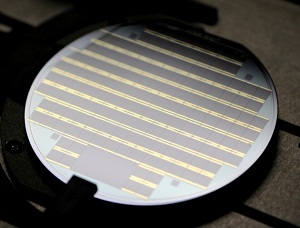Venture Capital for solar down in 2012
 In virtually all sectors of the solar industry venture capital (VC) funding was down in 2012 from 2011, according to a new report from Mercom Capital Group, llc. The lowered VC funding reflects the issues the industry has had of late with oversupply dropping PV prices. However, there were two small bright spots, solar leasing and BrightSource, both attracting significant financing in 2012.
In virtually all sectors of the solar industry venture capital (VC) funding was down in 2012 from 2011, according to a new report from Mercom Capital Group, llc. The lowered VC funding reflects the issues the industry has had of late with oversupply dropping PV prices. However, there were two small bright spots, solar leasing and BrightSource, both attracting significant financing in 2012.
Overall VC investments across the globe sunk nearly 50 percent to $992 million in 2012, compared to $1.9 billion such funding in 2011. In spite of that almost as many deals 103 in 2012 as opposed to 108 in 2011 were closed, showing that the amount of VC available was significantly less. In fact, according to the report, the 2012 level is the lowest since 2007.
The main reason for the drop in VC capital is the two-year drop in silicon-based PV prices, said report author Raj Prabhu, managing partner of Mercom Capital Group. That means grim prospects for thin-film, concentrating solar and concentrating PV technologies, he said.
“It will be tough for other technologies to compete with the current crystalline silicon cost structure,” Prabhu said. “Going forward there will be less appetite for investing in technologies all the way to large-scale manufacturing, instead the model will be to partner with a strategic partner/investor in Asia with deep pockets who can help see these technologies through to commercialization,” he said.
However, the lowered prices have made it easier for downstream player like solar installers—particularly leasing companies, to attract VC. According to the report, VCs invested $269 million in 25 solar lease company deals, with leasing company SolarCity’s $81 million in VC falling second only to the $83.6 million raised by BrightSource Energy.
Despite the shift to investing in downstream technologies, Prabhu said it may not hamper new technology innovations. “VCs are still funding technologies that can improve efficiencies or cut costs, just not technologies that might need large-scale manufacturing,” he said.
Part of the reason solar is currently so cheap is because of chronic oversupply in the market, which is likely to draw down by 2014. “It could happen even earlier assuming that manufacturers behave rationally and keep their utilization levels in line with demand,” Prabhu said. “It all depends on the approach of Chinese banks. If lending standards are tight there will be fewer chances of manufacturers ramping up capacity irrationally.”
The report also looked merger and acquisition (M&A) activity in 2012 and found that the majority of mergers and acquisitions, 15 of them, occurred in U.S. followed by Germany with 12, and China 7. “Most of these M&A deals were distressed sales rather than companies getting bought for decent returns. A similar trend will continue into 2013 in the free markets,” Prabhu said. “In China the government may decide to let most of the underperforming manufactures go bankrupt as subsidies to ‘sick’ manufacturers becomes unsustainable,” he added.



